7.10.2017
Airbus’ “BLADE” laminar flow wing demonstrator makes first flight
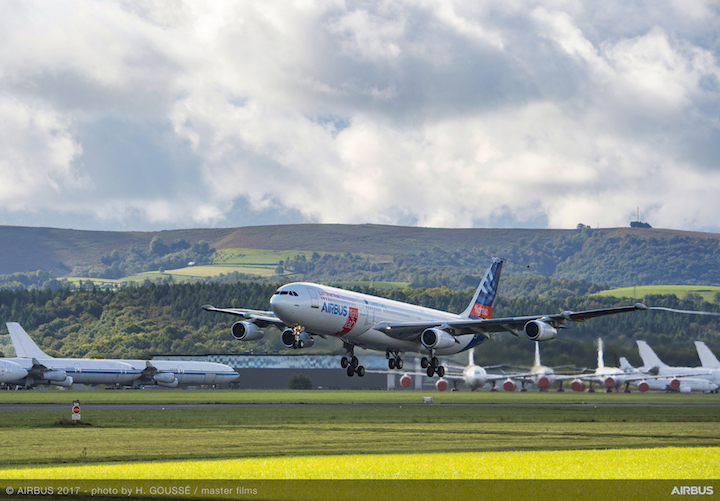
- Aiming to bring a 50% reduction of wing friction and up to five percent lower CO2 emission
- First test aircraft in the world combining a transonic laminar wing profile with a standard aircraft internal primary structure
Airbus’ A340 laminar-flow “BLADE” test demonstrator aircraft (A340-300 MSN001) has made its successful maiden flight for the EU-sponsored Clean Sky “Blade” project. The aircraft, dubbed “Flight Lab”, took off from the Tarbes aerodrome in southern France at local time 11:00, and after a series of successful tests it landed at Airbus’ facilities in Toulouse Blagnac. The overall flight time was 3hrs/38mins.
The BLADE project – which stands for “Breakthrough Laminar Aircraft Demonstrator in Europe” – is tasked with assessing the feasibility of introducing the technology for commercial aviation. It aims to improve aviation’s ecological footprint, bringing with it a 50% reduction of wing friction and up to five percent lower CO2 emission. Airbus’ A340 Flight Lab is the first test aircraft in the world to combine a transonic laminar wing profile with a true internal primary structure.
On the outside the aircraft is fitted with two representative transonic laminar outer-wings, while inside the cabin a highly complex specialist flight-test-instrumentation (FTI) station has been installed. The extensive modifications to the A340-300 test-bed aircraft took place during the course of a 16-month working party in Tarbes, with the support of numerous industrial partners across Europe. Today’s first-flight marks the kick-off of the Blade flight-test campaign to explore the wing’s characteristics in flight.
“We began by opening the flight envelope to check that the aircraft was handling correctly,” explains Airbus Flight-Test Engineer, Philippe Seve, who was on board the flight. “We achieved our objective to fly at the design Mach number, at a reasonable altitude and check everything was fine. We also checked that the FTI was working as expected, to identify further fine-tuning for the next flights.”
In the run-up to the start of this flight-testing phase, a small team of 10 specially trained pilots, test engineers and flight test engineers had prepared for this milestone for several months, spending time in a simulator and familiarising themselves with the FTI systems to be installed on the Airbus flight-test aircraft. Moreover, on equipment installation side, a working party of 70 people performed the FTI installation inside the aircraft, while teams from Bremen, Germany and Broughton, UK worked externally on the outer wings, with a team from Stade Germany, installing a pod containing infrared cameras on the fin.
On the wings, there are hundreds of points to measure the waviness of the surface to help Airbus’ engineers ascertain its influence on the laminarity – which is the first time that Airbus has used such a testing method on an aircraft. Other ‘firsts’ are the use of infrared cameras inside the pod to measure wing temperature and the acoustic generator which measures the influence of acoustics on laminarity. In addition, there is also an innovative reflectometry system, which measures overall deformation in real-time during flight.
A key goal of Blade is to be able to measure the tolerances and imperfections which can be present and still sustain laminarity. To this end, Airbus will simulate every type of imperfection in a controlled manner, so that at the end of the campaign the tolerances for building a laminar wing will be fully known. The flight Lab will perform around 150 flight hours in the coming months.
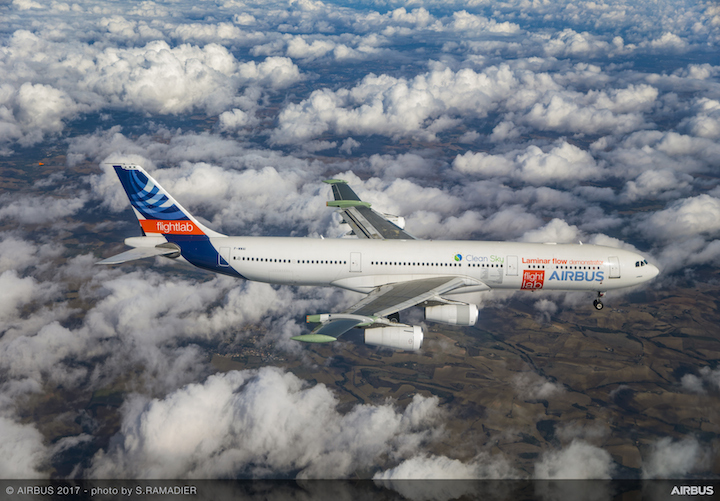
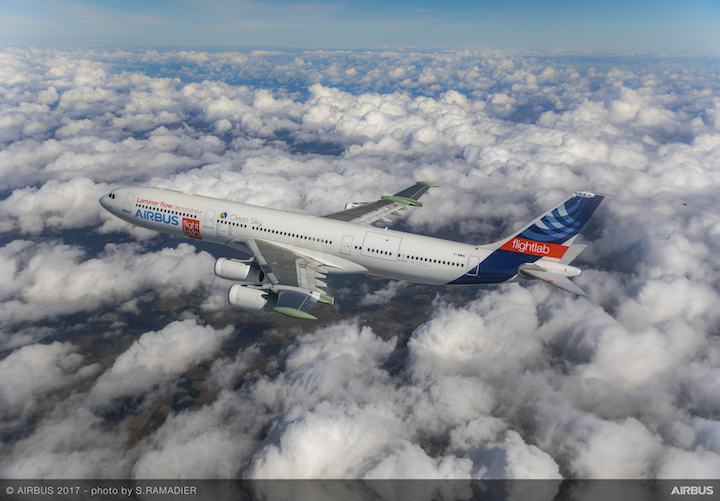
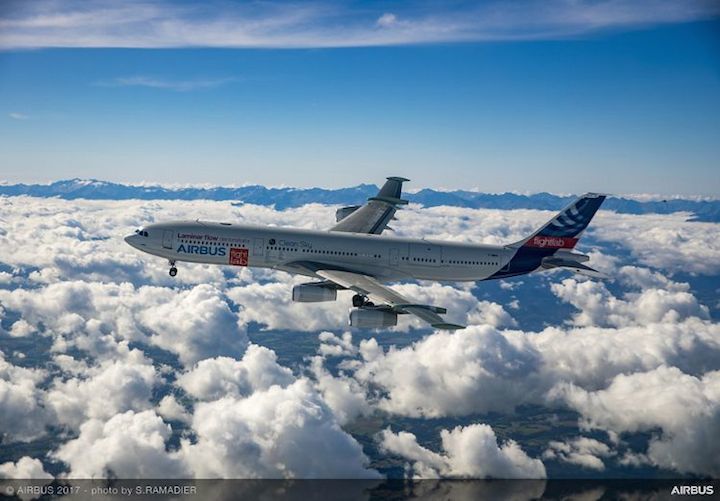
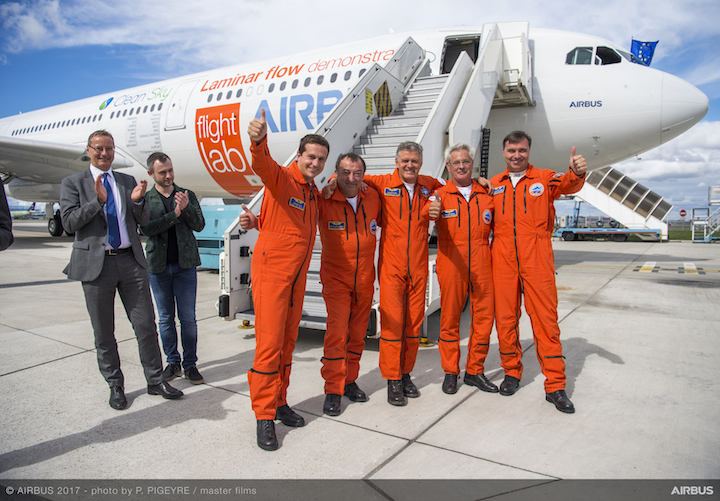
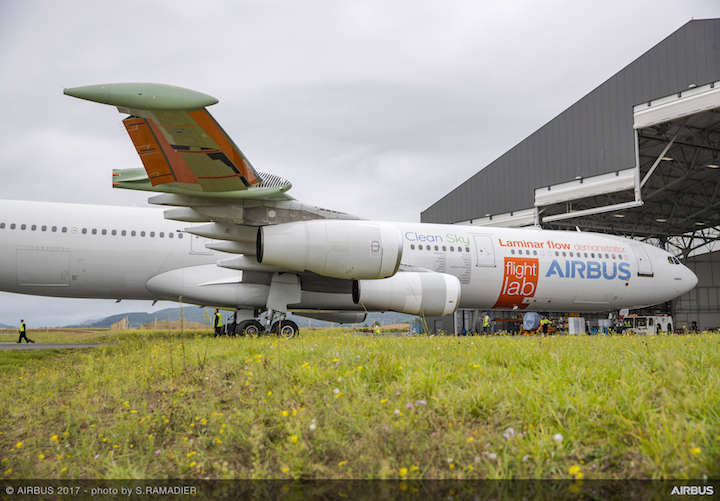
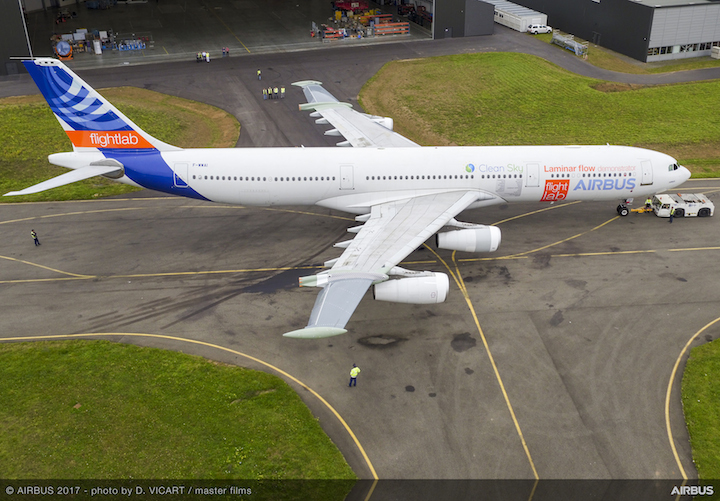
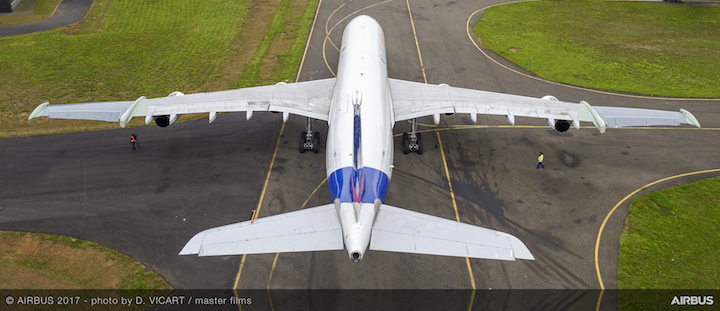
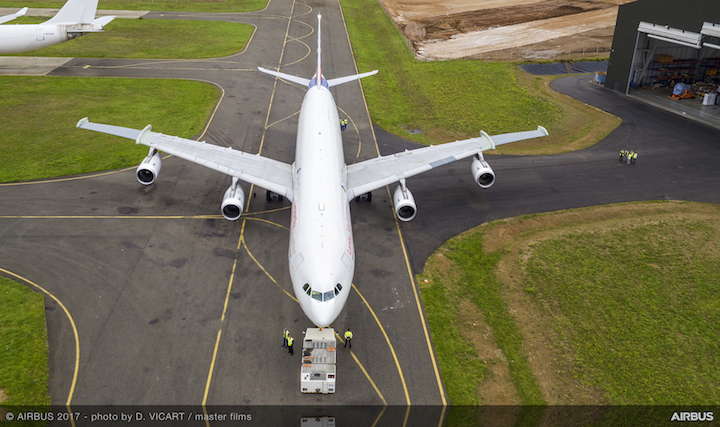
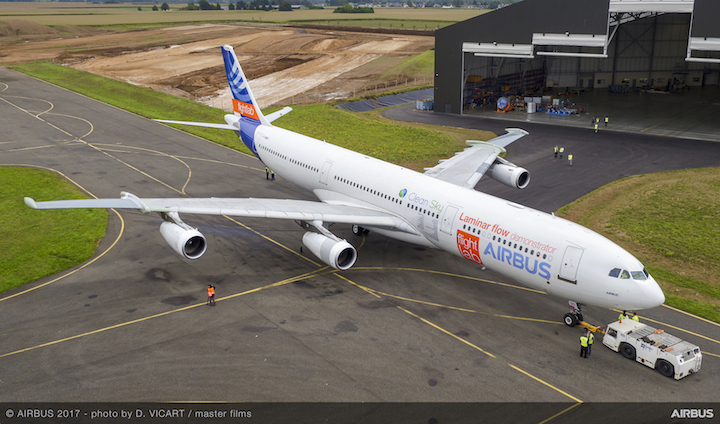

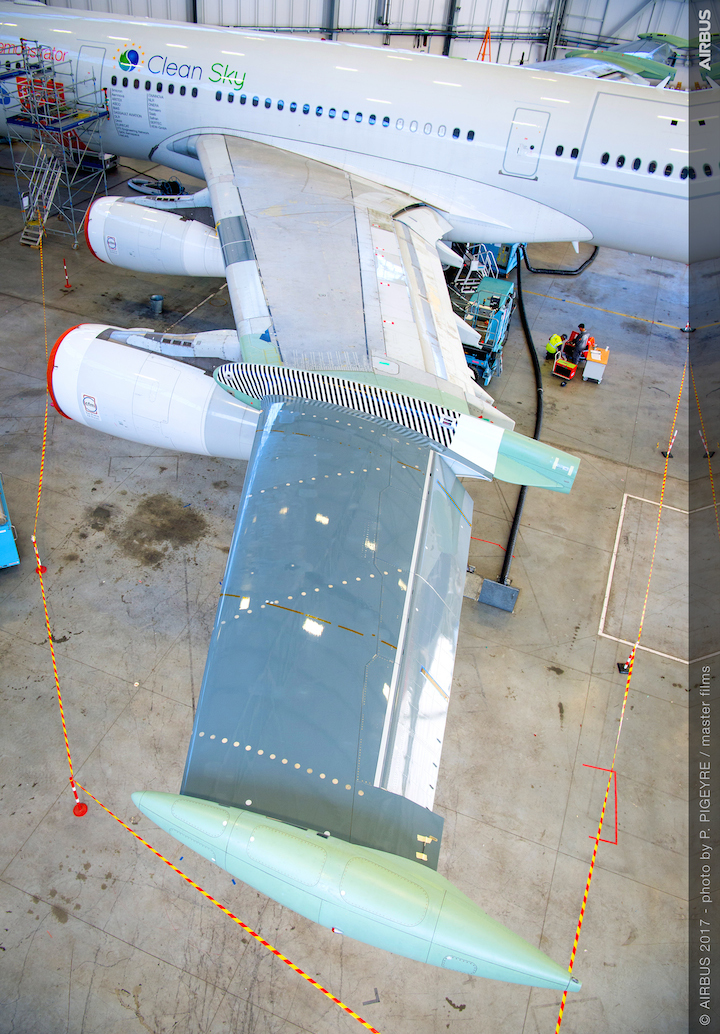
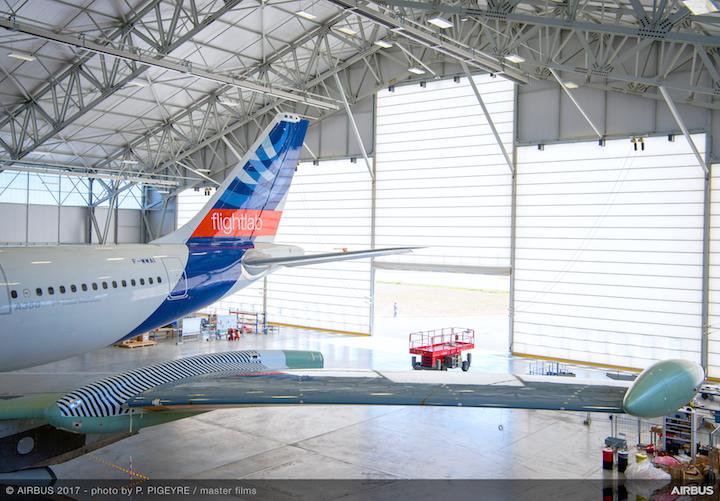
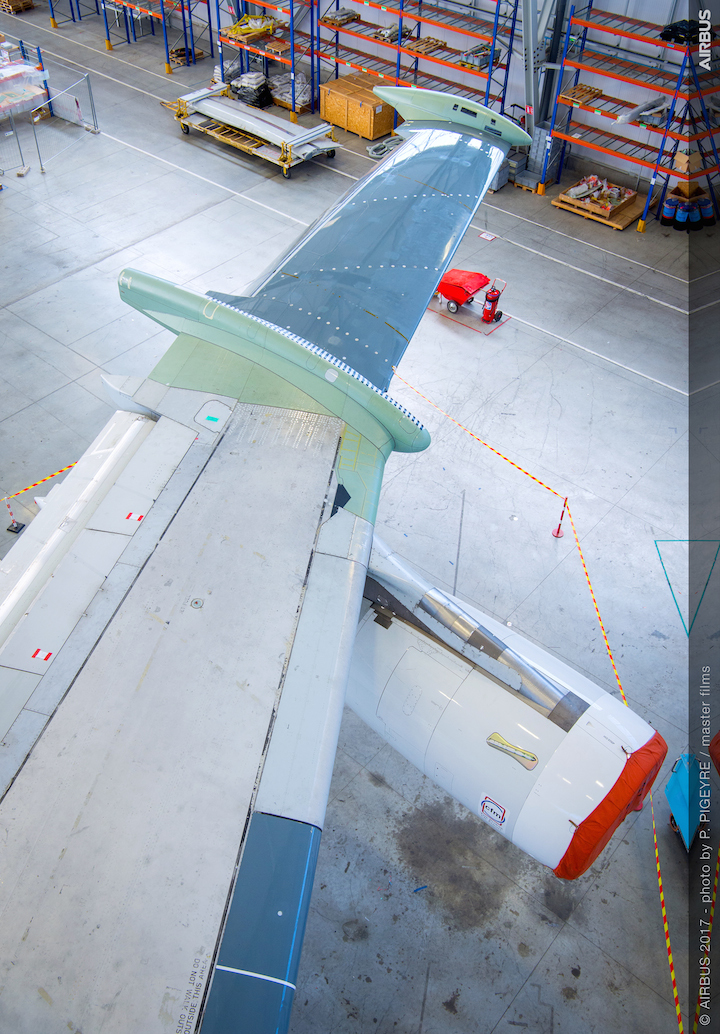
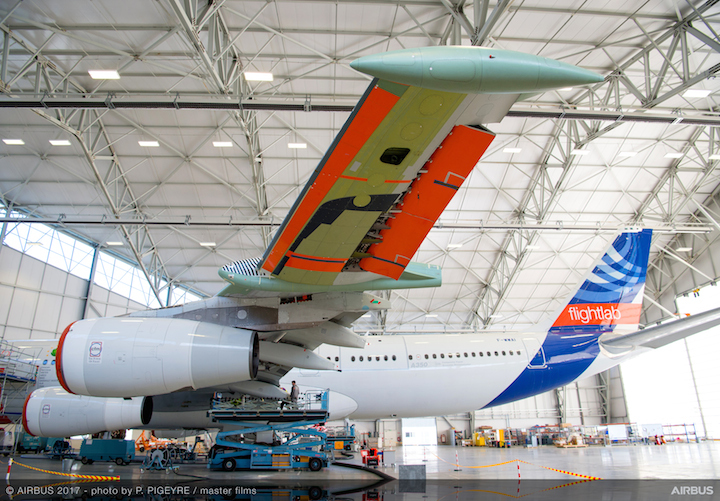
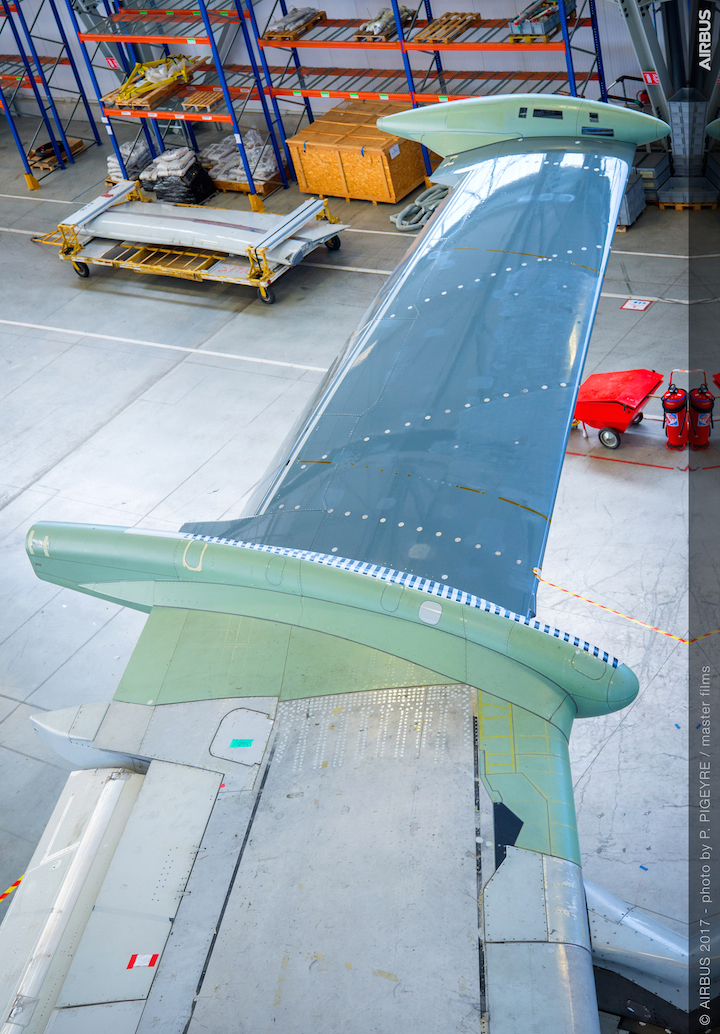
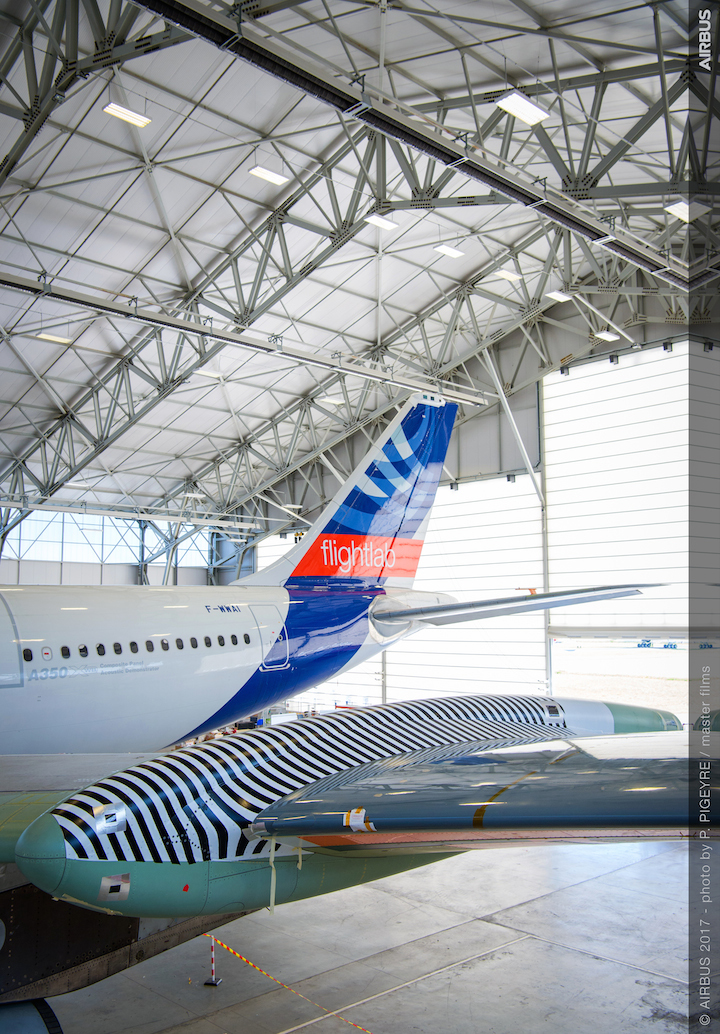
Quelle: Airbus
+++
BLADE Press Backgrounder:
Breakthrough Laminar Aircraft Demonstrator in Europe
Key messages:
~ BLADE stands for: “Breakthrough Laminar Aircraft Demonstrator in Europe”.
~ Airbus is the leader for this project. BLADE is part of Clean Sky Smart Fixed Wing Aircraft Integrated Technology Demonstrator (SFWA - ITD).
~ BLADE is an EU industry-supported R&T technology demonstrator programme as and such there is no link to any possible future aircraft programme. Clearly, upon successful demonstration and maturity of this technology, it could then possibly be considered for applicability in a future aircraft programme.
~ Laminar wings have not been used in commercial aviation because the technology up to now was not mature enough. And the technology has not been fully tested in flight so far to validate it.
~ The new laminar wing sections were installed by Airbus in Tarbes to be flight-tested in place of the previous outer wings of our A340 (MSN01) ‘testbed’ (around 150 flight hours planned).
~ The rapid and recent developments of numerical flow simulation tools now enables us to design, build, demonstrate and validate an optimized natural laminar flow wing.
~ Underscoring Airbus’ industry leadership and commitment to innovation and R&T for the benefit of global air transport.
~ BLADE project aim to demonstrate that the laminar technologies are ready for smart wings.
~ Reduction in wing friction: up to 50%.
Background:
The purpose of Smart Fixed Wing Aircraft - Integrated Technology Demonstrator (SFWA - ITD) is to take innovative technologies, concepts and capabilities that are currently at Technology Readiness Level 3 (“TRL 3”) – and which demonstrate the potential to contribute to providing a step change in CO2 emission levels – and developing and validating them at TRL 6.
BLADE project, standing for Breakthrough Laminar Aircraft Demonstrator in Europe, has been launched
in 2008. The BLADE project’s prime aim is to accelerate the industrialisation of future laminar wings.
BLADE is the largest flight test demonstrator ever launched in the world. BLADE will demonstrate the viability of laminarity for commercial aircraft, via testing two concepts of representative Natural Laminar Flow (NLF) wing. The new wing sections are close in size/configuration to a possible future wing for a short-range / single-aisle airliner. These new test wing sections are installed and to be tested in place of the previous outer wings of a large A340 widebody aircraft ‘testbed’.
One of the new wings is made of an integrated upper cover and leading edge in Carbon Fibre Reinforced Plastic: CFRP (SAAB concept on the port wing) and the other one is made of a separate upper cover in CFRP and a metallic leading edge (GKN concept on starboard wing). The project intends to test natural laminarity sustainability in real operational conditions, in order to be able to properly specify & design (by specifying manufacturing tolerance requirements) future laminar components/wing for a next generation commercial aircraft.
Aerodynamic, flight control laws related to the specific shape of the natural laminar wing has been defined by Airbus experts and validated through a set of ground test (wind tunnel, simulator sessions).Expected benefit of laminar wing is to reduce the aircraft drag (up to 8% for a short range) and then decrease fuel burn (Short Range Aircraft is up to 5% net fuel burn saving on an 800nm mission).
The BLADE project led by Airbus is aggregating 21 partners (entities including SMEs and Research centres), providing their design, manufacturing or testing skills to provide parts or checks of the BLADE flying aircraft. Major partners are: 5micron, Aernnova, Airbus, ARITEX, ASCO, BIAS, Dassault Aviation, DLR, DNW, EURECAT, FTI Engineering Network, GKN Aerospace, INCAS, ITAINNOVA, NLR, ONERA, Romaero, Saab, Safran, SERTEC, VEW-GmbH. The role of Airbus & each partners is detailed in a dedicated document. On top of structural modification, Airbus led the other Aircraft system modifications (fuel, hydraulic, electric…) induced by the wing transformation, then enabling the experimentation.
The Flight Test Instrumentation (FTI) is another challenging & innovative aspect of the BLADE project. On top of classical in-flight measurements (temperature, pressure, accelerometer…), various specific measurement has been developed by Airbus and some partners.
Laminar flow transition location on the wing thanks to hot films & Infra-red cameras;
NLF wings surface quality and deformation thanks optical measurement (reflectometry);
NLF wings shape measurement in flight with loads and inertial sensing technologies (IMU);
NLF wings local/precise deformation thanks internal mechanical sensor (Waviness Beam).
Airbus Research & Technology program is using several aircraft in order to test new technologies within a department called “Flight Lab”. BLADE is part of this program and is implemented on the A340-300 MSN1 Aircraft. A dedicated hangar has also been constructed in Tarbes to house the BLADE (and other Flight Lab project) reconfiguring working party.
Started in 2008, the following event has already been successfully performed by the BLADE team.
April 2010: Concept Freeze review;
December 2010: NLF Wings A maturity review;
January 2013 : NLF Wings B maturity closure review;
November 2014: NLF Wings C maturity closure review;
April 2015: Start of the NLF upper covers manufacturing;
December 2015 : Start of NLF wings assembly at Aernnova facility;
April 2016 : Start of the Blade Working Party in Tarbes (jigs & platforms installation);
June 2016: Removal of the A340-300 MSN1 legacy wings;
August 2016: NLF wings assembled by Aernnova delivered to Airbus for painting;
November 2016: End of the NLF wings join up to the Aircraft;
February 2017: Aircraft Power-On;
August 2017: End of Systems & FTI installation, testing and calibration.
The BLADE project aims to run a series of flights grouped into two flight test campaigns – the first one in the 4th quarter of 2017 and the second one in 2018 to extensively test and characterize ‘laminarity’ robustness in representative operational conditions.
The overall project led by Airbus Flight Lab Team deployed simplified methods and tools in order to properly monitor the following transverse functions: project, configuration, quality, Validation & Verification (V&V) cycle, permit to fly and safety management.
Quelle: Airbus
